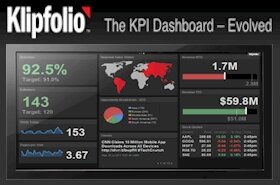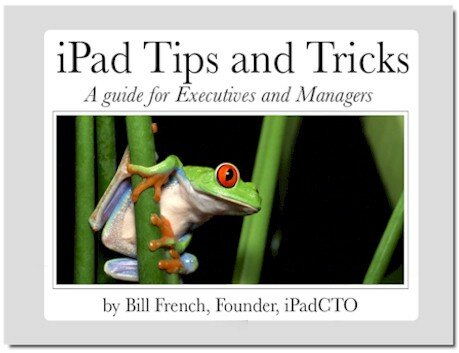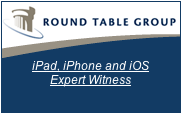Last year I wrote a piece about QuickOffice:Connect. I was pretty excited about the architecture and the general ideas expressed in this product direction concerning the aggregation of cloud services to achieve greater user and enterprise benefits. Then it got swept up by Google and my hopes for this idea faded.
Despite the rapid demise of QO:Connect, those fellers were on to something important; unified oversight of digital assets. Specifically a findability and knowledge discovery vision that would eventually make it possible to search for artifacts across all cloud resources that a user has access to. And by “cloud resources”, I mean the massive array of documents and copies of documents that get squirreled away without any sense of location, version, synching configurations, or logical organization.
Sure, QO:Connect was being positioned for prosumers But the advantages of aggregating document sources while embracing the reality that many cloud storage platforms have already been selected by users and their companies, made a great deal of sense. And especially smart if the objective is to help users eventually transform disparate pools of information into a unified discovery, security, and storage model that even the most skeptical security-minded IT leaders would endorse.
Accellion is on a very similar trajectory.
 Accellion kitepoint
Accellion kitepoint
Unlike QO:Connect’s focus on aggregating consumer-centric clouds, Accellion has adopted an enterprise-first perspective of business and IT cloud requirements while also factoring in the user’s penchant for mobile agility and freedom.
Accellion’s most recent announcement, kitepoint, provides a glimpse of new connective tissue that has the capacity to bind long-sustained and widely adopted digital asset repositories with services that appeal equally to mobile workers and IT executives. kitepoint is a connective architecture designed to integrate SharePoint services with Accellion’s secure cloud services.
Extending successful and fully understood SharePoint services for workers, Accellion also provides hardened and tested mobile and desktop apps [Accellion App is available in the iTunes App Store as well as Google Play]. By simply connecting these two worlds, operational and security efficiencies begin to pile up. Indeed, this is less about cloud computing and far more about mobilizing enterprise content. And to be clear, according to Accellion, kitepoint‘s connector architecture is capable of providing access to more than just SharePoint; it will soon allow a broad blend of content including Autonomy, Documentum, and OpenText.
Eliminating Duplication
There are two things about modern Internet architectures that should never be considered afterthoughts in product design. They are (i) are authoritative artifacts, and (ii) immutable addressing of those artifacts. Accellion understand these fundamental laws and I’ve written at length about this topic.
There should never be more than one authoritative address for a digital artifact, and once instantiated, it should never change.
Also known as perma-links, this is an essential and foundational element of smart and sustainable information architectures.
There should never be more than one copy of a digital artifact.
Email is a notorious evil-doer of duplication. No other tool has violated this principle more egregiously while replicating copies upon copies; versions upon versions. It is likely the cause of the most painful and costly enterprise inefficiencies. Email is not only the place where knowledge goes to die, it is a “tool” without precision much like a chainsaw. And what’s worse, occasionally users grab the chainsaw by the wrong end.
Accellion architects apparently live by these laws.
Unified Access
Once SharePoint is brought under the Accellion umbrella, files from disparate silos can be accessed in a blended folder hierarchy. This sounds pretty simple on paper, but there are some serious demons to be considered. Aside from the obvious file and folder organizational issues, the security context takes on a whole new meaning and set of critical requirements. But kitepoint is an able player that creates a single user experience for assets across the horizon of participating services.
At the core of Accellion’s colaborative approach, kitepoint raises the bar in these ways.
- Edit files easily on the desktop or on mobile devices all without risking content security
- Securely share SharePoint files with external users via “Send File” function
- No additional SharePoint uer accounts (CALs) required
- Content encrypted in transit and at rest; content expiration supported
- Integration between SharePoint and Accellion Workspaces on the horizon
And Then There’s Unified Search
Or is there?
It’s great that they’ve create a unified architecture that embraces all facets of web and mobile. And the added performance to ensure that documents aren’t needlessly duplicated and exposed to security breaches, is what sets Accellion apart from the 90+ iOS apps that operate as clients to SharePoint. Unified mobile search is the next key enterprise requirement and above all, Accellion and a handful of cloud providers stand at the doorstep, poised and ready to walk through.
So what’s stopping them? Plenty actually. Unified [enterprise] search is a tough nut to crack. Verity tried it in the late 90′s. Google Appliance has been around for many years. Finding and indexing content is simple. Doing it in a security context and then providing access through mobile apps and also defending the information from duplicatation and sharing (intentionally or unintentionally) outside the realm of repository control, is a far bigger challenge.



















